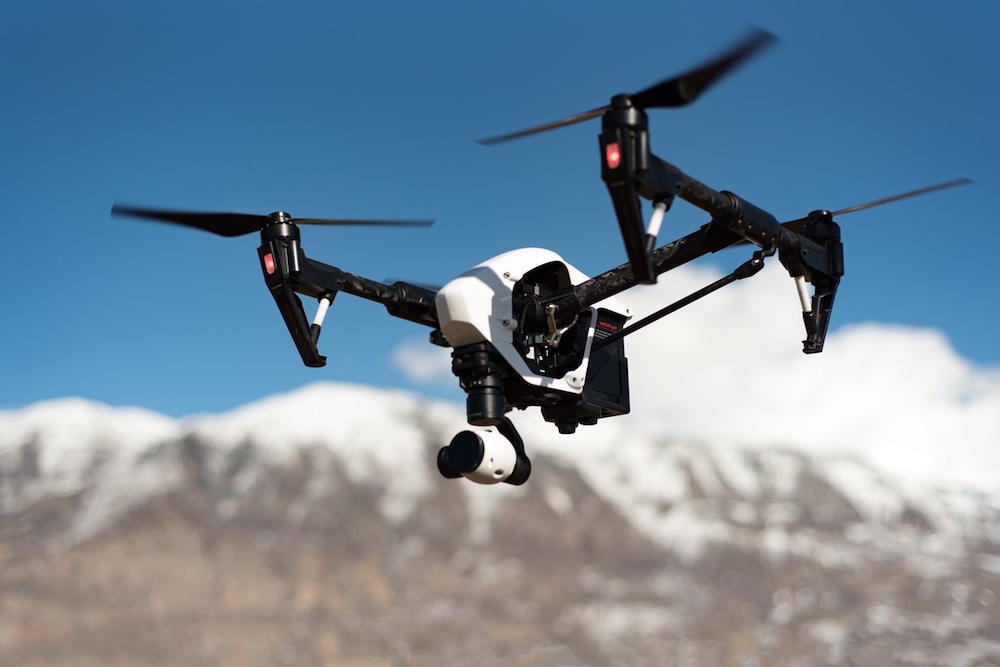What I know about drones: Matt Karau

Drones, or more accurately unmanned aerial vehicles (UAVs) are proliferating in our skies. No longer simply surveying suspicious people from above, they are now available for any ol’ Joe to fly above our heads.
Amazon wants to deliver products using them, law enforcers want to catch criminals with them, and obviously there’s room in the wedding industry, which is overflowing with them.
So why is funding in the drones sector down this year when it was going so well in 2015? CB Insights says although investment in drones tipped downwards, 2016 has still not been a bad year. There is instead a move towards funding software for drones (think Lebanon’s NAR) rather than hardware.

As a youngster, Matt Karau flew model airplanes. Since then he thinks the feeling of being connected to a flying device, by building it yourself and watching in awe as it flies across your neighborhood, is being lost in the age of instant access to technology.
Karau, now head of the engineering design studio at NYU Abu Dhabi, has a tricky relationship with drones. While he doesn’t gush over them, he does see the immense benefit in their existence.

There’s only so much you can do with a quadcopter. As a toy for video games, it’s an amazing tool and can be educational. I think young people should play with them. But when we talk about their applications, it’s unclear what the future is. They’re great for photography, for surveillance of systems, but then what about running longer missions and doing things over a longer period of time and over a greater distance? At some point you plateau in terms of how long of a mission a quadcopter can actually do. You want UAVs to go longer distances so you’ll need to put a bigger battery on them, bigger propellers, and that means bigger motors and then even bigger batteries.
We don’t need it all. When it comes to deliveries, you’re talking about every single bit of energy coming out of a battery going into keeping the motor spinning, to keep it aloft. It’s an inefficient way to lift or transport things. Delivery drones sound enticing on the surface but then my mind blossoms thinking about how, say, Amazon is going to cope with the challenges of the ‘air’. For example, sky pirates — what’s to stop me from stealing that new phone being delivered to someone else? Not only is the concern of how this can be physically managed, but also do we actually need this kind of technology?
We’re passing through peak drone stage now. There is an initial point where a technology comes on the market, and everyone says ‘that’s awesome’. An example is the Parrot AR drone, a wonderful toy you could control with an iPad or iPhone. When it came out everyone just went ‘wow drones, I can do that, that’s a thing for me’. Then you suddenly have every application in life and reimagine it done better with a drone. “I need that glass of water over there, I bet a drone can get it to me better.” It’s ridiculous stuff.
Are we solving a problem or are we just applying this widely available tech to everything because it has a liquid nature that can be smeared on everything. As humans, we want a future where this is true. The application space has pretty much been explored fully now.
It’s the batteries that will change drone use. Until we see a huge leap in battery technology or lift systems, we’re reaching that point where we’ve seen it all. Not to say that there’s nothing new under the sun. There’s a point where we’re sliding down the curve now. Of course we shouldn’t punish ourselves too badly for that, the curve cycle is the case with almost every technology.
Regulations are a problem area. As early as the 1960s you’d go buy your model airplane kit, glue it together, spend weeks assembling and testing, doing everything to make sure it wouldn’t crash. Now you can just walk into a store, purchase a quadcopter and in 15 minutes you can be out flying it without training or sense of responsibility if it crashes. When I flew model airplanes as a kid, I got insurance. And when doing Drones for Good, we purchased additional insurance. These are things that most people don’t think about it. Before, people identified safety as their own responsibility.
But, drones are not all bad. I like drones in spaces where they bring sensible technologies to people who would otherwise not have access. There’s a group called Conservation Drones and they promote drone tech in spaces where there are vast areas needing to be covered with low budget for satellite surveillance. An example would be rhinoceros protection. It’s a hint at a future where we’re not having to change our entire lifestyle to enable drones to be around us.
Feature image via Pexels.com

Leave a Reply